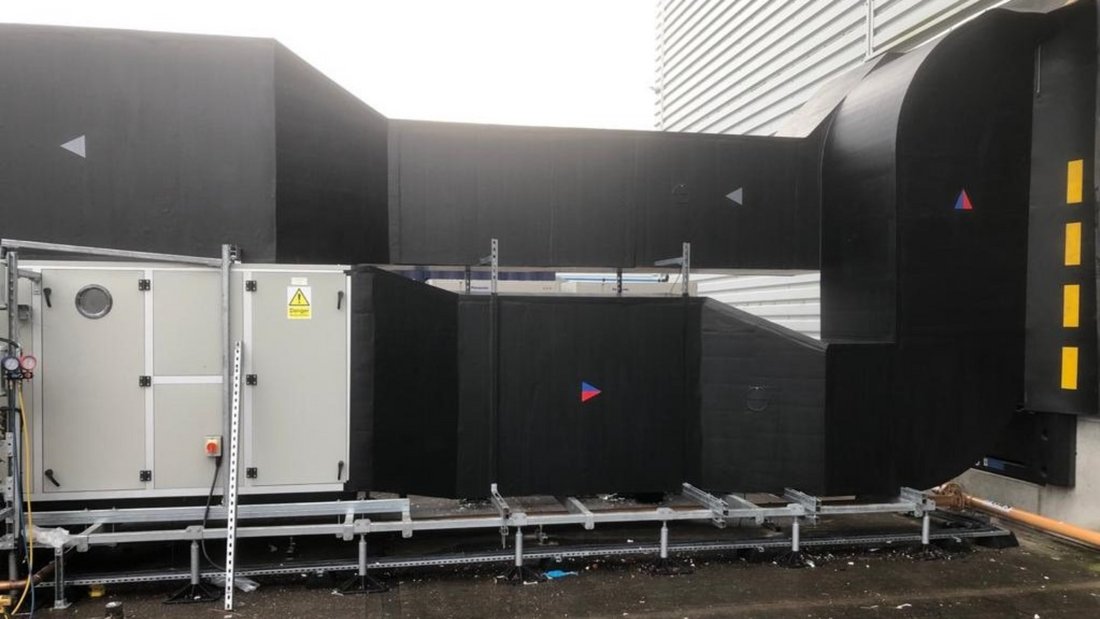‘Tis the season to prepare and set budgets for maintenance and building works. After a difficult year for the construction sector, we now look to the future to ensure we invest in the right areas and choose quality at the right cost for us.
In HVAC systems, rigid ductwork is the common choice for most commercial applications due to its strength and durability compared to its flexible counterparts. That’s why we’re focussing on the pros and cons of three different types of rigid ductwork, so you can choose the one that’s best for your project.
Why Care About Which One?
As with the whole HVAC system, the design needs to balance cost against longevity. Longer term, ductwork needs to be kept clean and free from moisture to prevent the build up of mould and bacteria. The nature of ducting means that any contaminants in the air will be circulated around the building, particularly in venting applications. The design phase also offers the opportunity to determine how regularly you want to maintain and replace the ductwork. It’s installed in hard to reach areas and maintaining it requires access equipment, adding costs to the servicing and repair work. Finally, it’s generally made to order, so you want it to last!
Sheet Metal
The classic ducting, is modelled by John McClane fearlessly traversing Nakatomi Plaza in the Christmas classic, Die Hard. The reason he could do this is because sheet metal is strong and durable. It’s typically made of galvanised steel or aluminium and it’s built to last in industrial settings.

KlasseCLAD is a vapour barrier to ducting, sealing the ductwork from the elements and protecting the longevity of your HVAC system.
Pros
- Strong and unlikely to be crushed
- Lightweight
- Mould-resistant
- Prone to leaking at the joints
- Can be expensive
Fibreglass
Fibreglass ducting is lined on either the inside or outside of the ducting to protect against temperature fluctuations, which cause condensation. Condensation and moisture build up within ducting provides a breeding ground for mould. The lining helps prevent this by maintaining a constant temperature, but it also needs to be protected from external vapour.
We recommend the use of KlasseCLAD to seal the ductwork, even if your ventilation system is lined. The lining also softens the noise of the HVAC system, making it ideal for offices or commercial applications. Over time though, the fibreglass deteriorates and releases fibres into the ducting. This has been linked with serious health conditions, so it needs to be monitored carefully and replaced in a timely manner once it begins to age. We would always recommend that professionals are used to clean ductwork, but this is even more important for fibreglass ducting where the fibres can get released into the ventilation system.
Pros
- Insulated to protect against temperature fluctuations
- Muffles sounds of the HVAC system
Cons
- Can be prone to mould and bacteria build up over time
- The fibreglass deteriorates and puts fibres into the ventilation system
Fibreboard
Similar to fibreglass, fibreboard ducting provides insulation against environmental conditions. Fibreboard is made of compressed glass wool with a foil outer layer, which is usually sealed to the inside of the metal ducting. The advantage of this system over fibreglass is that it won’t release fibres into the ventilation system.

The joy of fibreboard ducting is that it’s easy to install and comes pre-insulated. However, the rough nature of the board disrupts airflow through the ducts, reducing the efficiency of the whole system. Nevertheless, the insulation is great for meeting green energy standards. Some manufacturers use recycled glass to lower the carbon footprint of the product even further!
The downside of fibreboard is that it’s made of porous materials. When it deteriorates, the insulating material allows mould and bacteria to grow within the ducting if there’s any moisture present.
Pros
- Easy to install
- Great for meeting green energy standards
- Doesn’t release fibres into ventilation like fibreglass
Cons
- Prone to mould and bacteria build up
- Rough surface reduces the efficiency of the airflow
Conclusion
The ‘best’ rigid ductwork is the one that best suits your application, whether that’s fibreglass for a quiet office, fibreboard for its ease of installation or sheet metal for longevity.
The most important consideration is that it’s installed correctly by professionals. It’s integral that the installation is completed with durable, hardwearing sealing products like KlasseCLAD. This not only seals moisture out but also traps the air in, preventing it from escaping and causing inefficiencies in your airflow.
Careful planning and design will ensure next year’s construction projects flow like clean air through your ventilation!





